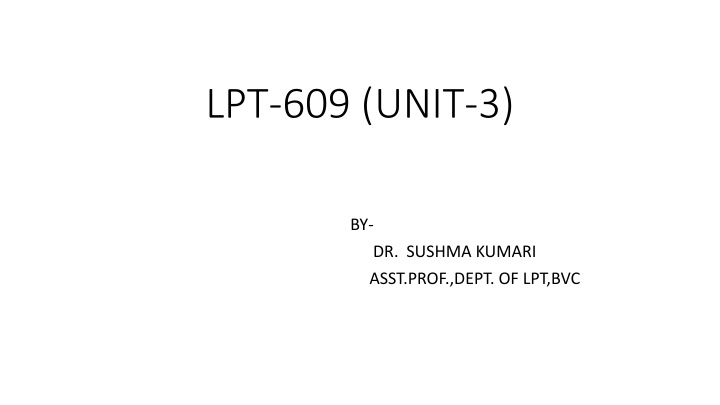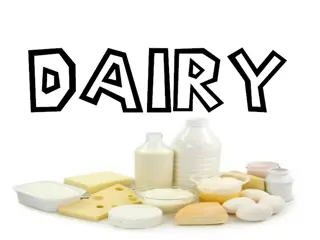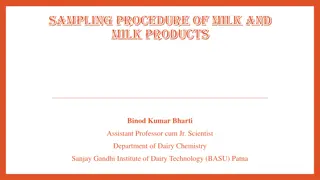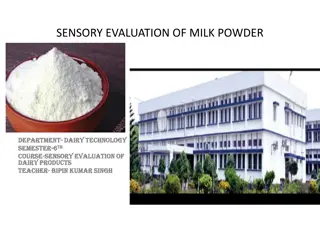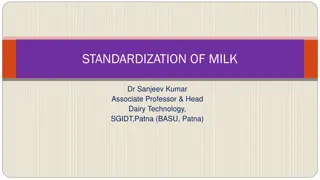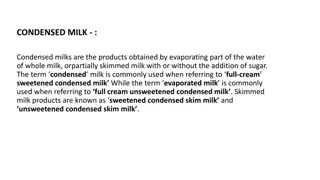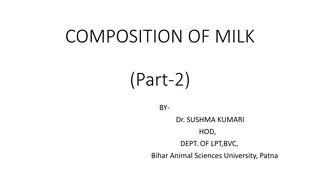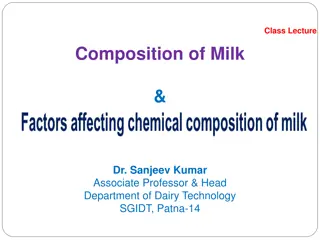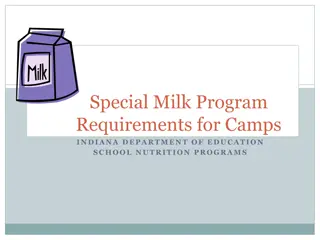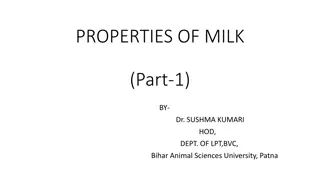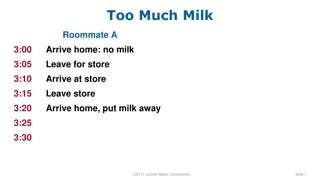Milk Microbiology for Quality Control
Milk provides a favorable environment for microbial growth, impacting its quality. Learn how to control microbial growth through proper handling, cooling techniques, and monitoring for quality assurance in milk production.
Download Presentation

Please find below an Image/Link to download the presentation.
The content on the website is provided AS IS for your information and personal use only. It may not be sold, licensed, or shared on other websites without obtaining consent from the author.If you encounter any issues during the download, it is possible that the publisher has removed the file from their server.
You are allowed to download the files provided on this website for personal or commercial use, subject to the condition that they are used lawfully. All files are the property of their respective owners.
The content on the website is provided AS IS for your information and personal use only. It may not be sold, licensed, or shared on other websites without obtaining consent from the author.
E N D
Presentation Transcript
LPT-609 (UNIT-3) BY- DR. SUSHMA KUMARI ASST.PROF.,DEPT. OF LPT,BVC
Milk Microbiology Milk provides a favourable environment for the growth of microorganisms. Yeasts, moulds and a broad spectrum of bacteria can grow in milk, particularly at temperatures above 16 C. Microbes can enter milk via the cow, air, feedstuffs, milk handling equipment and the milker. Once microorganisms get into the milk their numbers increase rapidly. It is more effective to exclude microorganisms than to try to control microbial growth once they have entered the milk. Milking equipment should be washed thoroughly before and after use rinsing is not enough.
Microbial growth Microbial growth can be controlled by cooling the milk. Most microorganisms reproduce slowly in colder environments. Cooling milk also slows chemical deterioration. The temperature of freshly drawn milk is about 38 C. Bacteria multiply very rapidly in warm milk and milk sours rapidly if held at these temperatures. If the milk is not cooled and is stored in the shade at an average air temperature of 16 C, the temperature of the milk will only have fallen to 28 C after 3 hours. Cooling the milk with running water will reduce the temperature to 16 C after 1 hour. At this temperature bacterial growth will be reduced and enzyme activity retarded. Thus, milk will keep longer if cooled. Natural souring of milk may be advantageous: for example, in smallholder butter-making, the acid developed assists in the extraction of fat during churning.
The low pH retards growth of lipolytic and proteolytic bacteria and therefore protects the fat and protein in the milk. The acidity of the milk also inhibits the growth of pathogens. It does not, however, retard the growth of molds. Naturally soured milk is used to make many products, e.g. yoghurt, sour cream, ripened buttermilk and cheese. These products provide ways of preserving milk and are also pleasant to consume. They are produced by the action of fermentative bacteria on lactose and are more readily digested than fresh milk. The initial microflora of raw milk reflects directly microbial contamination during production. The 8 microflora in milk when it leaves the farm is determined by the temperature to which it has been cooled and the temperature at which it has been stored. The initial bacterial count of milk may range from less than 1000 cells/ml to 106/ml. High counts (more than 105/ml) are evidence of poor production hygiene. Rapid tests are available for estimating the bacterial quality of milk.
Microbial deterioration of milk and milk products Sources- bacteria, viruses, yeast and moulds. Stages of growth of micro organisms- 1. lag phase 2. log phase 3. stationary phase 4. decline phase
A/o optimum growth temp. bacteria can be classified into 1. Psychrophilic 2. Mesophilic 3. Thermophilic Effect of microbial growth in milk & milk products- i. Souring- by lactic acid producing bacteria Lactose---- Lactic acid, volatile acids and compounds. ii. Souring and gassiness- by coli. gr ( soil, manure, feed , faecal matter). iii. Proteolysis- unpleasant odour. iv. Roppiness-
Bacteriological standards of raw milk SPC / ml (or g) Grade Not exceeding 2,00,000 very good 2,00,000 to 10,00,000 good 10,00,000 to 50,00,000 fair Over 50,00,000 poor SPC in Pasteurized milk less than 30,000/ml
